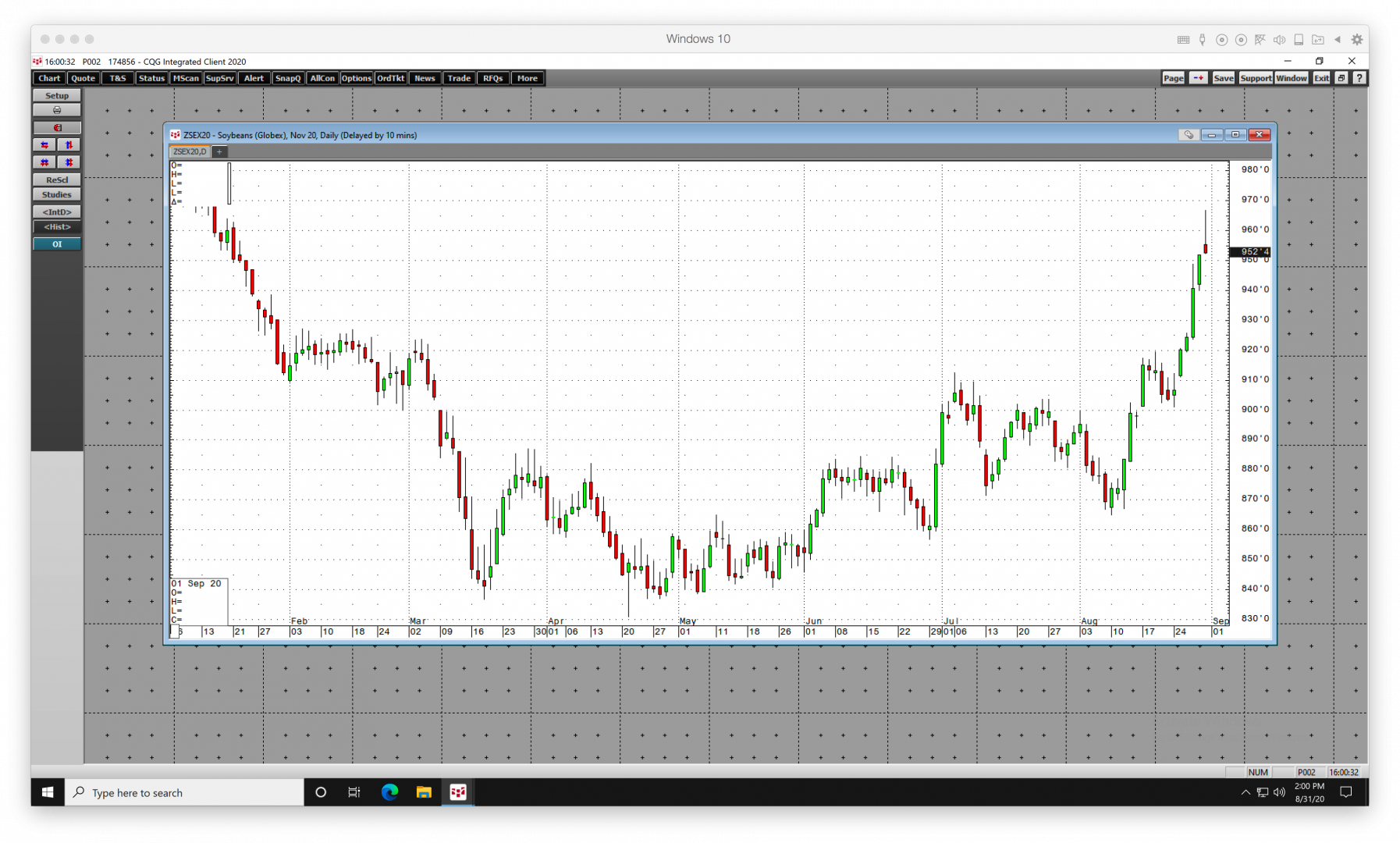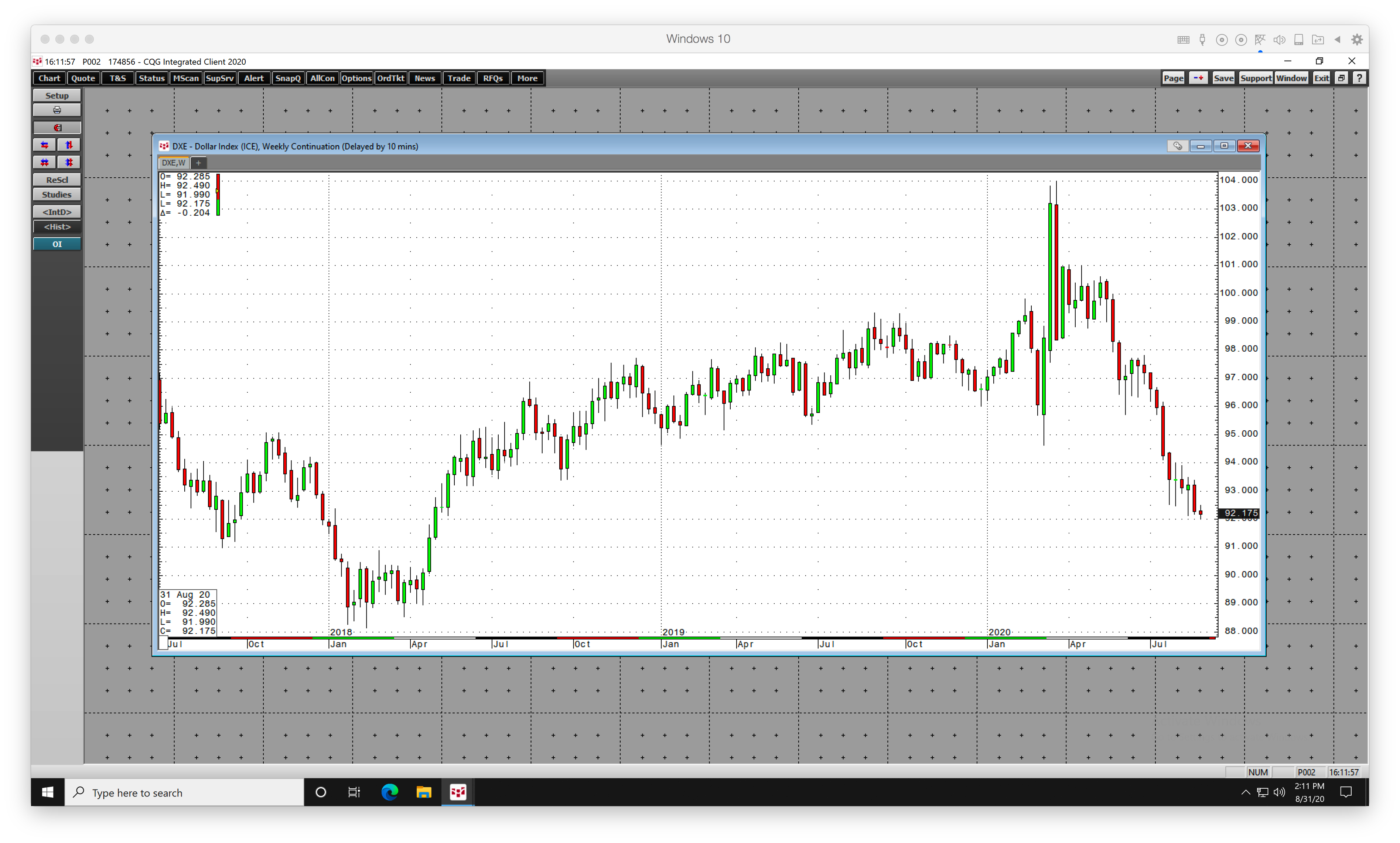The end of the summer is the start of the harvest season in the grain markets. The United States is the world’s leading producer and exporter of corn and soybeans, and a leading producer of wheat. The grains and oilseed are the agricultural products that feed the world.
The last time the grain markets experienced a significant weather event that caused supply shortages was back in 2012. That year, drought conditions sent corn and bean futures prices to all-time highs and wheat to its highest price since 2008, when dry conditions pushed the primary ingredient in bread to its record peak. Over the past eight years, Mother Nature cooperated, and grain supplies were at levels that satisfied the global demand.
Grains often move higher during the planting season in the spring or the early summer months of the growing season, as uncertainty over the crops causes speculative buyer and consumer hedging. In 2020, the rallies have come late in the summer season. Over the second half of August, we have seen recoveries in the three leading grain futures markets as they prepare for the fall harvest.
The August WASDE was not bullish, but the August 10 Derecho was a reminder of the fragile state of supplies
On Friday, September 11, the USDA will release its September WASDE report. The August report, which outlines the supply and demand fundamentals for grains and many agricultural products, was not very bullish for the corn, soybean, and wheat futures markets. As the 2020 harvest approaches, the USDA told markets that supplies are ample to meet the worldwide requirements. However, the August 10 derecho that damaged crops in the US was a reminder of the fragile state of the fundamental equation’s supply side for the products that feed the world. At the same time, the decline in the US dollar, the pricing benchmark for grains, and most other commodities have put upward pressure on prices over the past month.
As the chart shows, November soybean futures rose from a low of $8.6525 on August 10 to a high of $9.6675 on August 31 or 11.7%.
December corn futures appreciated from a low of $3.20 on August 12 to a high of $3.6425 or 13.8% on the final trading session of the month.
December CBOT wheat futures rose from $4.97 per bushel on August 12 to $5.6025 on August 31, a rise of 12.7%.
The falling dollar and damage from the mid-August derecho lifted the prices of the grains and oilseed futures that all closed a lot closer to the high than the low for the month.
Demand is always rising in the grain markets
The demand side of the fundamental equation for grains is an ever-rising factor for the commodities that feed the world. Each quarter, the global population rises by approximately twenty million people. According to the US Census Bureau, on August 31, there were over 7.677 billion people on our planet. Each day the number rises, which means more people require nutrition. The requirements for grains continue to increase, and supplies are a year-to-year affair with the weather conditions the most significant factor. The August derecho was a reminder that Mother Nature could cause supply issues in the blink of an eye.
As we head into the 2020 harvest, grain and oilseed futures prices have been moving to the upside.
Soybeans, corn, and wheat prices rebound as the dollar falls
The dollar is the world’s reserve currency and the pricing mechanism for most commodities. Grain and oilseed futures are no exception. The dollar index reached the highest level since 2002 when it traded to 103.96 in March.
The weekly chart shows that the dollar index has been falling steadily since March, moving from an eighteen-year high to an over two-year low. The index fell below critical technical support at the September 2018 low of 93.395 in late July. On the final day of August, the dollar index made another lower low at 91.99. The falling dollar has provided support for grain futures prices.
Meanwhile, the futures prices remain far below the all-time highs from 2012 in corn and beans, and 2008 in the CBOT wheat futures market. Consumers have had no incentive to hedge their requirements over the past years. Market prices have been consolidating a lot closer to the lows than the highs.
Given the expanding demand and fickle nature of demand, the next time there is a weather event, we could see explosive price action in the grain futures markets. The 2020 crop will satisfy global demand, but that is no guaranty that the 2021 crop will do the same.
Follow crop progress on CQG
CQG now offers crop progress data to subscribers. A recent post by Thom Hartle, CQG’s Director of Application Services, outlined the robust and granular crop progress data from the USDA. Following the crop progress data will give traders and investors a leg up on other market participants when it comes to identifying shifts in supplies that could lead to significant rallies over the coming months and years.
When it comes to market fundamentals, the demand side is on a steady trajectory higher, but supplies are the X-factor for price direction.



